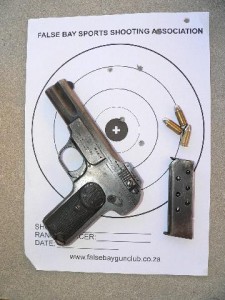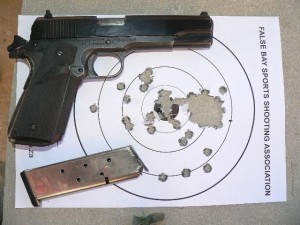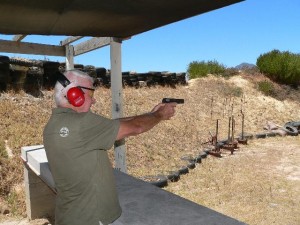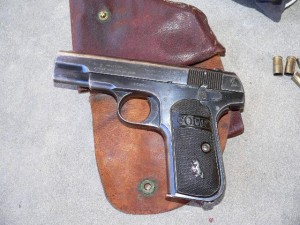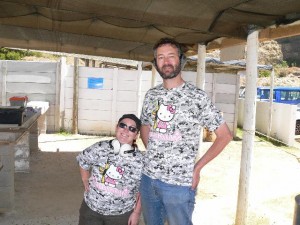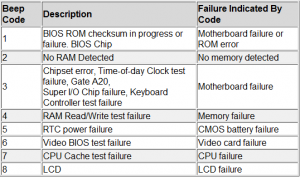From his blog:
Sunday, August 15, 2010
It is my sad duty to tell all of you who read Bob’s blog that Bob passed away this past Friday, August 13. How much he will be missed is incalcuable. Thank you all for all the support you have given him. I’m his wife. He was a great man.
I have little to add to the above. Bob kept us entertained on the VW and Vanagon mailing lists, provided good advice free of charge, and built engines and aeroplanes on the side. Sadly, I never got to meet him.
This story is one of my favourites.
VW – The Flying Pig
There’s a gal on the Vintage VW list who calls her bug ‘Boris.’ I mentioned Boris at dinner one night then had to explain, or try to explain, that a lot of Volkswagen owners give their bugs and buses names.
My wife gave me one of those looks, asked what I called my bus. Blank. To me, it’s just the Green Bus. Before, there was a Brown Bus, before that a Red & White bus.
I said I didn’t give names to things. “But you called your airplane ‘The Spirit of Vista’,” she pointed out. But never flew it to Paris. “If I ever put wings on the bus,” I told her, “I’ll give it a name.” And muttered something about doing it just as soon as pigs could fly. That cracked her up. It also named the bus. “The Flying Pig?” she laughed.
“I couldn’t do that,” I muttered. I used to have a buddy who was a cop, spent umpteen years building a helicopter. Called it The Flying Pig. Flipped it during a test flight and burned to death. I wouldn’t want to steal his thunder. But maybe El Puerco Volador? Is that right? I’m always getting my Spanish mixed up.
A ham radio buddy came over after supper. He’s got some strange plumbing problems. Only way to fix it is to use an adaptor that will allow old thin-wall ABS pipe to mate with new schedule 40 PVC pipe, but now that the box stores have driven all the real hardware stores out of business no one carries the adaptors
So we made some.
Turned them up on the lathe. Took only a few minutes. Lathes are handy things and mine’s fully automatic. Just grab the knobs and think about something else while the parts sort of make themselves. I was thinking about Flying Pigs.
While I’m working, my buddy is looking around the shop. There’s an airplane engine under a bench, two fully dressed Volkswagen engines on scooters, a Datsun engine sulking over in the corner beside an orphaned 2-cylinder air-cooled Diesel engine that might one day power something strange and noisy. Above the diesel hangs a row of heater boxes.
My buddy looks at the five Volkswagen heat exchangers hanging in a row. Five. An engine needs two, a lefty and a righty. So how the hell did I manage to end up with five heat exchangers? I never noticed that before. All new, too.
Six blower housings. Three dog-house, three flat-backs. One of the dog-house housings is an after-market 36-hp style that proved it couldn’t flow as much air as stock, ended up not being used. I’ve no idea how the others came to be in the shop. You leave the door open, stuff wanders in. My hands make another adaptor and my buddy hunkers down, peering under a bench.
Three 12v alternators, two Motorolas, one Bosch. Two 12v generators. A whole scad of 6v generators. Why do I keep that crap? Blowers. I had a nifty idea for using old blowers to make… I’ll think of it in a minute.
A whole bunch of intake manifolds. Oops! Make that a bunch and a half; couple more of them hanging over there. Dual-ports and single ports, several of each. DP Kadron bases. SP Kadron bases. That makes… at least two bunches. And carbs. Lotsa carbs. Box of Kadron carbs. Box of Solex carbs. Whole big drawerful of other carbs including a lonely Bug Spray. Future projects, waiting for… the future, I guess.
Mufflers. Yea gawds have I got mufflers! Four stock bug mufflers, at least that many extractors. It’s hard to tell with extractors. You toss them in a pile, they start squirming around, get all tangled together, you gotta spray them with a hose, beat them apart with a stick.
Black, greasy thing under a bench. My buddy gives me a look, brows raised. “Tranny,” I tell him. Two more, back in there some place, along with a pile of axles. One of the trannys is a rebuilt, ready to run. I’ve been planning to install it in the ’67. I better make a note to myself to get to it Real Soon Now.
Cylinder heads. Pile of them here, row of them there, two on that bench, pile over beside the grinder, couple over by the welding rig. The bench where I do head work has got this big box of valves, another box of fuel pumps, some old, some new. Shelves hold rebuild kits for carbs and pumps and generator brushes and wheel cylinders and a whole slather of reloading equipment for half a dozen different calibers. The reloading stuff should be over on another bench but that one’s being used to test a six inch mirror for a reflecting telescope.
Stack of flywheels over by the milling machine, right beside a stack of stock, original, real VW-type Volkswagen hub caps for an early bus. Should be four. I count them twice. There are four. I feel relieved, give those five heat exchangers a glance. Still five of them.
Bus steering gear and steering wheel shaft leaning up in the corner behind the welding machine, like its waiting for a ride, which I suppose in a way it is.
Overhead, running pretty much the full width of the twenty-two foot wide shop is a pair of airplane wings. Volkswagen engine tin-ware is poked up on top of the wings, the smaller pieces hanging down on hooked hunks of welding rod, handy to get at. A stack of sump plates like little Frisbees. Funny gaskets. Sez ‘GMC manifold.’ There’s an old Jimmy down in the grove. My hands finish another coupler as my buddy gazes at stuff hanging on a wire.
“VW air-vanes,” I tell him. “Goes inside those things overt here,” I nod toward the blower housings. Two sets of air vanes, one reconditioned, painted with gray epoxy primer, others looking like something out of the La Brea Tar Pits, which tells me they came out of an all-original 1967, never-been-touched engine I recently overhauled. The thing blew an oil cooler seal, pumped oil all over for about six months before the guy sold it to a kid. They were both happy as clams, each sure they’d gotten the best of the deal.
I finished making the adaptors for my friend, chatted a while. “You’ve got a lot of stuff,” he said as I saw him on his way. Strong note of admiration, tinged with something else. Relief? Envy? Is it every man’s dream to have lots of stuff?
I came back to the shop to wipe down the lathe, cover it, sweep down. Seeing the shop through my buddy’s eyes was a strange experience, like when he stood reading the note on the chalkboard over where the phone used to be: “Pullen – Concrete”, a reminder about helping Clint Pullen do a little sidewalk out behind his house so his wife’s wheelchair wouldn’t get caught on the stones. Clint’s been dead at least five years. After I moved the phone, I never used the chalkboard again. We did the sidewalk for Alice back in 1977.
I sat looking at the incredible collection of stuff that has crept up on me over the years, looking at it with mixed emotions. Too much stuff is bad for you, nails you down. But my formative years were during World War II, when everything was rationed, you even had to stand in line to buy food. That’s when I was taught that throwing away Good Stuff was a sin. We needed all that Stuff to Remember Pearl Harbor, so we could Slap the Jap and Heel the Hun. They made us chant slogans like that in school, then sent us out to scour the neighborhood for scrap metal, knocking on doors, brow-beat old ladies into giving up their aluminum pans.
And they were right.
Have you ever tried to make steel? It’s not easy. Better to keep some on hand in case you need it, like that pile of tubing, or those old door panels. You never know when you’re liable to need a door panel for a… whatever the hell it came off of. And an old veedub axel makes a fine gun barrel. Remember Pearl Harbor. And Ruby Ridge.
I sat thinking a little too long, started going a little crazy. Bus right outside, pair of airplane wings strapped up across the ceiling of the shop. Five heat exchangers hanging in a row.
El Puerco Volador. Maybe I could use one of them door panels for the rudder.
Copyright © 1995 Robert S. Hoover
RIP, buddy.

